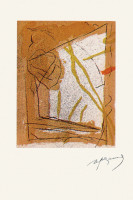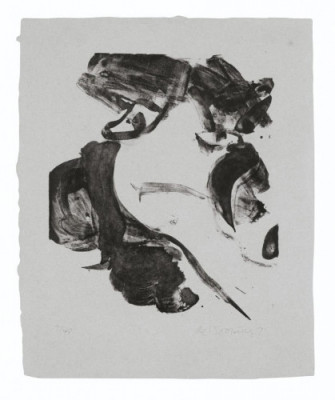
Details
Artist
Styles
// Estiu-4 by Albert Ràfols-Casamada, created in 1988, is a limited edition etching that captures abstract forms in a minimalist, structured composition. The artwork features contrasting dark and light areas, interspersed with dynamic blue accents that give the piece a sense of movement and depth. The geometry of the shapes appears fragmented, yet the overall arrangement suggests a delicate balance and rhythm. This piece, like much of Ràfols-Casamada's work, melds abstraction with a poetic sensibility, inviting the viewer to interpret and explore the visual harmony within the chaos. The edition is limited to 75 prints.
Estiu-4, 1988
form
Medium
Size
28.5 x 38.5 cm
- Inches
- Centimeters
Edition
Price
- USD
- EUR
- GBP
Details
Artist
Styles
// Estiu-4 by Albert Ràfols-Casamada, created in 1988, is a limited edition etching that captures abstract forms in a minimalist, structured composition. The artwork features contrasting dark and light areas, interspersed with dynamic blue accents that give the piece a sense of movement and depth. The geometry of the shapes appears fragmented, yet the overall arrangement suggests a delicate balance and rhythm. This piece, like much of Ràfols-Casamada's work, melds abstraction with a poetic sensibility, inviting the viewer to interpret and explore the visual harmony within the chaos. The edition is limited to 75 prints.
- Recently Added
- Price (low-high )
- Price (high-low )
- Year (low-high )
- Year (high-low )
Albert Ràfols-Casamada
Portfolio 12th Anniversary Of Galeria Joan Prats , 1988
Limited Edition Print
Lithograph
EUR 500
What is Gestural?
Gestural art is a term that describes painting with freely sweeping brushstrokes. The primary goal of gestural art is to allow the artist to physically express emotional impulses. The varied, yet expressive paint marks are intended to convey the artist's inner thoughts and emotions, which viewers are believed to understand through the dynamic and spontaneous application of paint.





























































